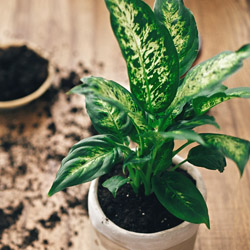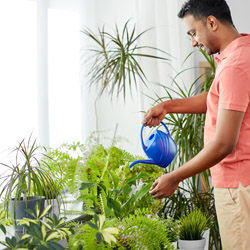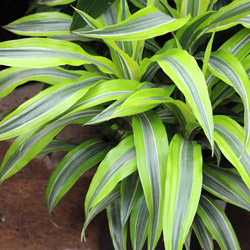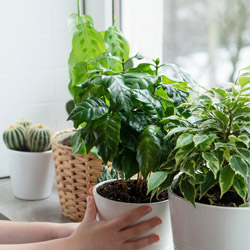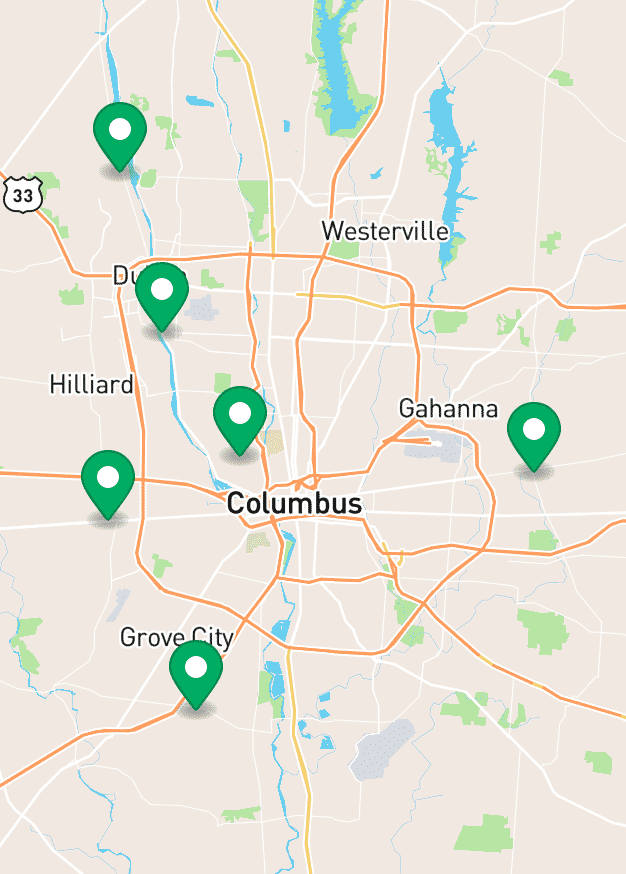Houseplant Parent 101
Houseplants add a breath of fresh air and bring a touch of nature into any home. When you’re ready to adopt your first houseplant, however, you need to be sure you’re properly equipped to nurture the plant so it will have a healthy, comfortable life in your home.
Why Adopt Houseplants?
Houseplants bring many benefits into indoor spaces. Not only do houseplants clean the air of pollutants and minimize odors, but they also reduce airborne allergens and can help improve respiratory conditions, including asthma. Houseplants improve indoor humidity, which can ease dry skin. Houseplants also reduce stress and anxiety and can bolster personal mood and productivity.
Despite all these benefits, however, it is best to start with just one or two beginner-friendly plants before cultivating an entire urban jungle. Just as it takes time to build a lush landscape or a richly productive garden, it takes time to adopt an entire family of houseplants and give them all suitable care. When getting started as a houseplant parent, taking steps slowly and carefully can ensure superior care for every plant you bring into your home.
Best Houseplants for Beginners
There are hundreds of different houseplants to choose from, and many are great for beginners. Plants that can tolerate some benevolent neglect or are adapted to a wide range of environmental conditions are best for beginners, and as you refine your houseplant care expertise, you will be able to choose plants with more delicate or finicky constitutions. In the meantime, the best houseplants for beginners include:
- Cast iron plant
- Dieffenbachia
- Dracena
- Golden pothos
- Jade plant
- Parlor palm
- Peace lily
- Snake plant
- Spider plant
When choosing a plant, look for one that will best match the environmental conditions, light being the most important, in your home, and one that will work best in the space you have available.
Supplies to Care for Houseplants
Depending on the plant you’ve chosen, you will need a variety of supplies to provide it with proper care. To give your plant a comfortable, healthy life, you will need…
- Pot – Choose a pot of the proper depth and diameter for your plant to feel comfortable with room to grow, but not so much room that it spreads too much, and not too snug so that its growth is inhibited. The pot should also have proper drainage to prevent the plant’s roots from sitting in water.
- Potting Soil – Every houseplant needs the proper growing medium. Choose a potting soil blend designed for the specific type of plant you select, such as one to encourage blossoms for flowering plants or a specialized sandy blend for cacti and succulents. General potting soil mixes are often suitable for most beginner-friendly houseplants.
- Houseplant Fertilizer – Choose the best fertilizer for your houseplant’s needs, whether you are nurturing lush foliage or colorful blooms. Fertilizers are available as liquids or granules and even spikes that can be inserted into the soil where they will gradually dissolve and be accessible for the plant to use.
- Watering Can – Every houseplant needs adequate water to stay lush and healthy. A small watering can is ideal for houseplants, and it should have a thin spout without a rosette so water can be applied to the plant’s roots rather than to the foliage. Watering globes are another great option for thirsty houseplants or if you have trouble with a regular watering schedule.
- Plant Stand – While a small houseplant can be easily set on a desk, shelf, mantle, windowsill, or any other space, larger plants may need to stay on the floor. A mobile plant stand with casters can help you move a bigger plant around with ease, and plant stands will also help improve air circulation around the bottom of the pot.
- Light – Natural light is best for plants, but houseplants often don’t get enough sunlight because of darker rooms, draperies, and shadows in the home. Positioning your houseplant near a south or west window will give it the best natural light, but supplemental lighting can also be very helpful, particularly in winter or if your home is darker than average.
- Trimmers – Every houseplant will need occasionally pruning or trimming to remove spent blooms or wilted foliage so it always looks its best. Small clippers, snips, or pruning shears with delicate, sharp blades will help you clip your houseplant safely and smoothly. Always clean the blades after use to avoid spreading any diseases or fungus between plants.
- Insect Control Spray – Every houseplant is vulnerable to a range of pests, including spider mites, mealy bugs, and other unwanted guests. Keeping insecticidal soap or neem oil spray on hand will allow you to safely and more quickly treat any infected plants so the pests aren’t able to spread.
Providing Your Houseplants With Proper Care
No matter which houseplants you choose or which tools you have to care for them, becoming a houseplant parent will be a learning process. Over time, you will adapt how you care for your plant in order to meet its needs more effectively. Position your houseplant in the proper light, but away from hot or cold drafts that can stress the plant. Avoid overwatering – the most common cause of houseplant death – and rotate the plant regularly so it will grow straight and strong. Research your exact houseplant for the best care regimen or simply ask one of houseplant experts, and you will grow more confident with each plant you adopt until you have a thriving urban jungle to enjoy.
